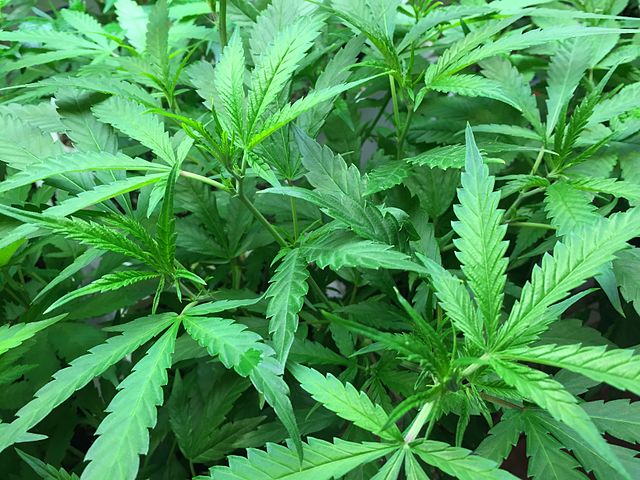Difference Between Marijuana Laws in Canada and US
Marijuana is a mixture obtained of the dried flowers of a plant called Cannabis sativa. It is often smoked in rolled cigarettes – generally called joints – but can also be used to brew tea or can be mixed with other ingredients and incorporated into foods and drinks. Marijuana is largely used for recreational purposes, but studies have found that it has significant benefits for the human body and has the ability to relieve pain and stress. For this reason, it is also used for medical purposes.

The debate regarding the use of medical marijuana is a key topic of discussion in many countries, and divides masses and politicians. Medical marijuana uses the chemicals contained in the plant of marijuana to treat a number of diseases and conditions, including Alzheimer, appetite loss, muscle spasms, migraine, nausea, effects of chemotherapy, pain, including chronic pain, multiple sclerosis and a number of other conditions. The product used for medical purposes is the same used for recreational ends, and contains over one hundred different chemicals that have different effects on the body, helping to ease pain and relax. Medical marijuana has the power to reduce inflammation, reduce anxiety, control nausea and other symptoms caused by chemotherapy, relax tight muscles in the case of multiple sclerosis, stimulate appetite, improve weight gain in people with eating disorders, AIDS and cancer, and even kill tumor cells and slow cancer’s growth.
For all these reasons, marijuana is often employed for medical purposes, and its use has been legalized in a number of states and countries. Yet, not all administrations agree to the medical use of marijuana, and there are a number of key differences between regulations concerning marijuana in Canada and the United States. Canada is close to complete liberalization, while the US government has a more conservative approach, although individual states have different laws and regulations on the matter.
What are Marijuana Laws in Canada?
The use of medical marijuana is legal in Canada and as of June 2018, bill C-45 was given royal assent and the complete legalization of recreational cannabis, in addition to the already legal medical use, will come into effect on 17 October 2018.
The use of marijuana was prohibited in 1923, but the use of medical marijuana was legalized in early 2000s. Since then, there has been significant progress on the matter and Canada has today become one of the most liberal countries in the world for the use of medical and recreational marijuana. In Canada, a number of researchers are focusing on the properties and benefits of medical marijuana, and have supported the complete legalization, which should come into effect in late 2018.
The so-called Cannabis Act creates a comprehensive legal framework for the use, possession, sale and distribution of cannabis in the country, and aims at protecting public safety by simplifying the access to safe and legal cannabis and legalizing profits by taxing the product. In addition, the Cannabis Act contains provisions aimed at keeping marijuana out of the hands of young people by controlling access to marijuana. According to the legislation, from 17 October 2018, adults over 18 years of age will be able to:
- Grow up to four plants, from licensed seed, per residence for personal use;
- Possess up to 30 grams of legal marijuana;
- Buy fresh or dried marijuana from licensed retailers;
- Have legal marijuana shipped at home; and
- Make cannabis products at home, such as drinks and food, without adding additives that might increase the concentration of marijuana.
In addition, the act includes strict regulations regarding the sale of marijuana to youth, and criminalizes possession over the limit, illegal distribution or sale, production beyond personal cultivation, giving or selling marijuana to persons under 18 years of age and moving cannabis across the Canadian border.

What are Marijuana Laws in the US?
In the United States, laws and regulations on the use – either medical or recreational – of marijuana depend on individual states and are not under federal control. In general, the US has a more conservative approach regarding cannabis compared to Canada, but the use of recreational marijuana is legal in nine states – California, Colorado, Maine, Massachusetts, Nevada, Oregon, Vermont and Washington – as well as in the District of Columbia. In addition, medical marijuana is legal in thirty states as well as in the territories of Guam and Puerto Rico, and the District of Columbia.
California was the first state to decriminalize the use of medical marijuana in 1996, and was followed by Hawaii in 2000 and by a number of other southern states in the following years. However, at the federal level, marijuana remains a prohibited substance under the Controlled Substances Act of 1970, and is classified as a Schedule I drug – meaning that it has high potential for abuse and not accepted for medical purposes – under the CSA of the Drug Enforcement Administration.
The opposition of a number of federal agencies to the use of marijuana for medical purposes, has translated in slow research progress in the field, leaving the US to lag behind other countries, including Canada, in the decriminalization process.
Similarities between Marijuana Laws in Canada and the US
Canada and the United States have different approaches to the use of marijuana, both for recreational and medical purposes. In general, Canada is more open and progressive in its legislation, with the complete legalization of cannabis expected to come into effect in October 2018, whereas the United States has a more conservative approach. Some of the similarities between marijuana laws in Canada and the United States include:
- The use of medical marijuana is widely accepted and legalized in Canada, but also a growing number of American states has moved towards a more liberal approach to the matter, legalizing the medical use of cannabis.
- In both countries, it is illegal to possess over a limited amount of cannabis, and the sale of marijuana – especially to under age persons – is a felony, unless it falls within the limits of the laws and regulations on the matter;
- According to recent surveys, there are a lot of similarities between Canadian and American cannabis users in terms of age and social status. In addition, in both countries there is a large support for cannabis legalization for medical purposes, although Canada has already achieved that goal and is now looking at complete legalization of the use of marijuana in the country; and
- In both countries there are provisions that limit the use and possession of cannabis, especially for youth under 18.
Difference between Marijuana Laws in Canada and the US
The approach of Canada and the United States to marijuana is very different, both in terms of general acceptance of cannabis use and in terms of laws and regulations on the matter. Some of the main differences between the two include:
- In Canada, cannabis laws are regulated at a central government level, whereas in the United States individual states can decide whether to legalize or not the use of recreational and medical marijuana, while at a Federal level, the use of cannabis remains illegal; and
- In Canada, patients with medical approval, can be shipped marijuana at their address, whereas in the United States, shipping cannabis is a felony. In the US, patients with medical approval for the use of marijuana – and exclusively in the states in which this is legally accepted – need to go to state-regulated dispensaries to purchase the recommended amount of cannabis for personal use.
Canada vs United States: Comparison Chart
In addition to the differences highlighted in the previous section, other key aspects differentiate marijuana laws in Canada and the United States.

Summary of Marijuana Laws in Canada and the US
Marijuana is used all over the world for both medical and recreational uses. In many countries, there is an open debate regarding the legalization of light drugs and substances, including marijuana. In Canada, the use of cannabis for medical purposes is already legal, and full legalization – even for recreational purposes – will come into effect in October 2018. Conversely, in the US, laws regarding the use of marijuana depend on individual states. Up to 30 states and additional territories accept the use of medical cannabis and 9 states and the District of Columbia also allow recreational use, while at a federal level it remains a prohibited substance.
- Difference Between Michelle Obama and Melania - January 29, 2019
- Difference Between Trump and Modi - December 4, 2018
- Difference Between Carbon Tax And Cap And Trade - December 4, 2018
Search DifferenceBetween.net :
Leave a Response
References :
[0]Abuhasira, Ran, Liat Shbiro, and Yuval Landschaft. "Medical use of cannabis and cannabinoids containing products–Regulations in Europe and North America." European journal of internal medicine (2018).
[1]ElSohly, Mahmoud A., et al. "Changes in cannabis potency over the last 2 decades (1995–2014): analysis of current data in the United States." Biological psychiatry 79.7 (2016): 613-619.
[2]Fischer, Benedikt, Sharan Kuganesan, and Robin Room. "Medical marijuana programs: implications for cannabis control policy–observations from Canada." International Journal of Drug Policy 26.1 (2015): 15-19.
[3]Image credit: https://media.defense.gov/2012/Dec/11/2000090053/780/780/0/121211-F-NB144-001.JPG
[4]Image credit: https://upload.wikimedia.org/wikipedia/commons/thumb/8/82/Marijuana_Plant_03.JPG/640px-Marijuana_Plant_03.JPG
